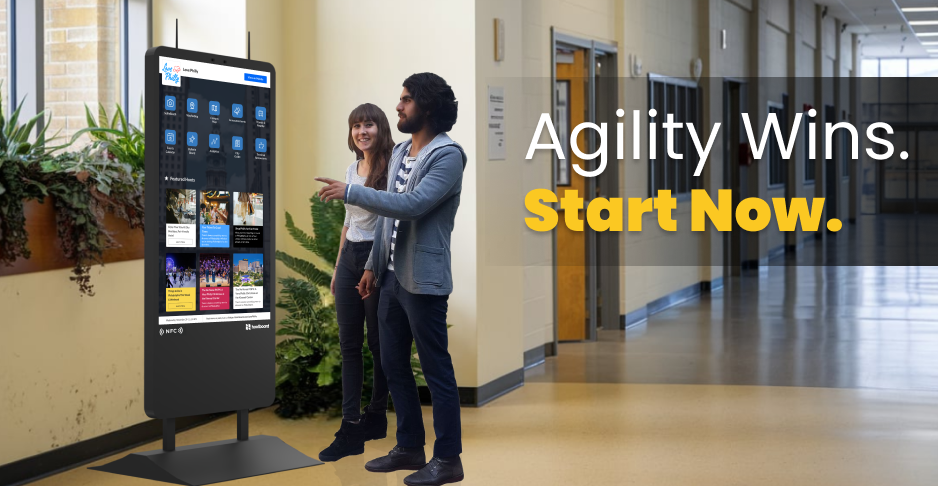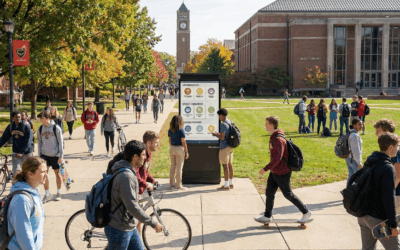It’s 9:00 a.m. on a Tuesday. The president’s cabinet is reviewing this year’s student satisfaction survey. Engagement scores have dipped. Only 47% of first-year students said it was “easy” to find information about campus events. Event attendance among commuter students is down 18%. Prospective students describe their campus visit as “confusing” and “hard to navigate.”
Everyone in the room knows the underlying issue: outdated communication and service delivery systems. But the obstacles are familiar too — procurement cycles, governance committee approvals, limited IT bandwidth, and budgets already locked for the year.
Then someone says what everyone is thinking: “We can’t afford to wait another year. Students won’t be more patient next fall.”
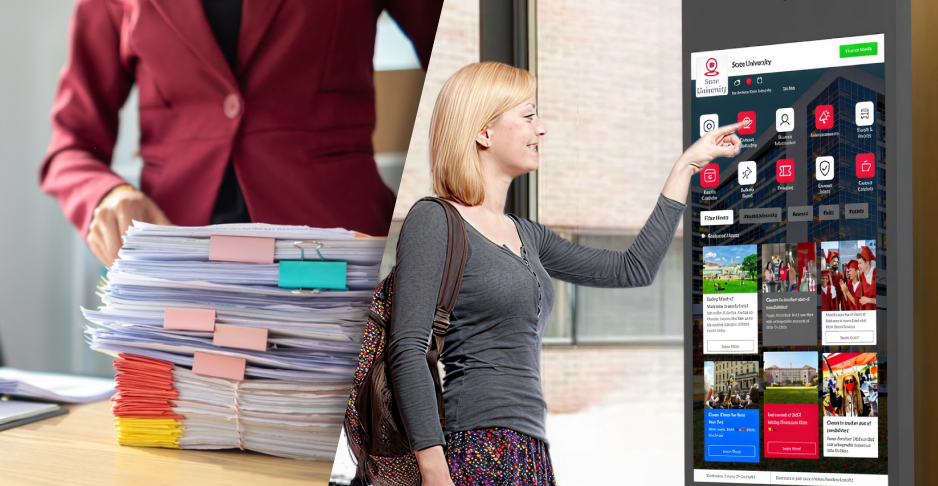
The Administrative Bottleneck Problem
In higher education, even a small tech initiative — like adding a new student engagement tool — must navigate:
- Needs assessments across multiple departments
- Budget committee reviews
- Procurement compliance and RFP processes
- Security and IT compatibility checks
- Pilot approvals
- Training schedules for faculty and staff
The average technology deployment takes 24–36 months from idea to full rollout. In the same period, a tech startup might launch three entirely new products.
The costs of this slow pace are significant:
- Retention impact — First-year students who feel disconnected are 25% more likely to leave before sophomore year.
- Recruitment impact — Prospective students are 68% more likely to choose a university that offers a seamless, modern campus visit experience.
- Operational impact — Manual communication and wayfinding tasks consume thousands of staff hours annually that could be reallocated to strategic initiatives.

What “Thinking Like a Startup” Means for Universities
This isn’t about breaking policy or skipping governance. It’s about applying startup agility within the rules. Here’s how administrators can adapt startup principles to higher-ed realities:
- Start Small, Scale Fast
Instead of requesting budget for a campus-wide rollout, run a low-risk pilot in a single high-traffic location.
- Example: Install an interactive kiosk in the student union for one semester to test event promotion, wayfinding, and service information.
- Design for the User
Startups obsess over their customers. Universities should design with students, visitors, and faculty in mind — not just system requirements.
- Example: Involve student ambassadors in the pilot to flag confusing layouts or underused features early.
- Build Cross-Functional Teams
In startups, IT, marketing, and operations collaborate from the start. Universities can replicate this by including all relevant stakeholders in the initial planning to avoid late-stage blockers. - Measure Like an Investor
Board-friendly KPIs are essential — engagement rates, QR code scans, event attendance lift, and satisfaction scores before vs. after deployment.
5. Iterate in Real Time
Don’t wait for the semester-end review. Make weekly adjustments during the pilot so small issues don’t become big ones.
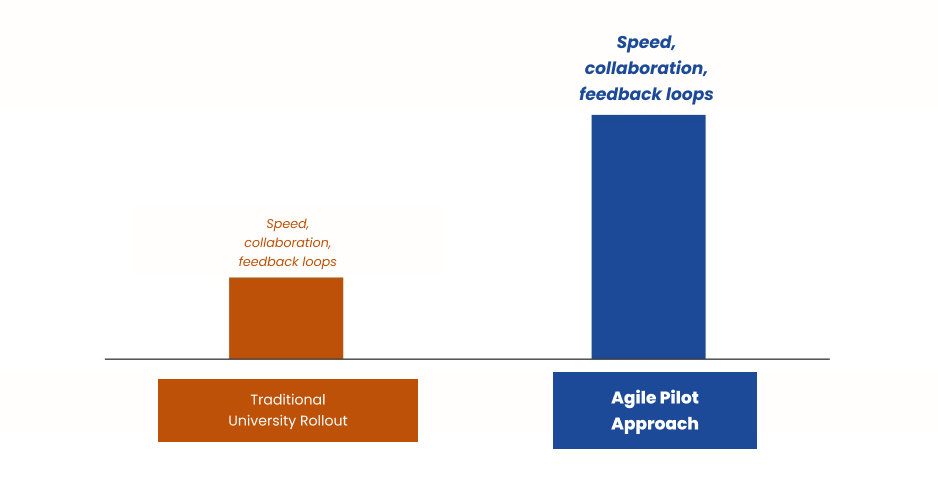
Modeled Scenario 1: Commuter Student Engagement Lift
In deployments with municipal visitor centers (a comparable environment with transient foot traffic), HootBoard interactive kiosks increased event awareness by 30–40% within the first 90 days. Modeled for a mid-sized university’s commuter hub, this could translate to:
- 30% more event visibility for commuter students
- 15–20% lift in club and activity participation
- Significant reduction in “where is this?” inquiries at campus help desks
Because the pilot would be contained to a single location, approval timelines could be shortened — giving leadership measurable results to present to the board before expanding campus-wide.

Modeled Scenario 2: Tour Experience Upgrade for Prospective Students
In tourism and visitor attraction deployments, real-time wayfinding and event feeds have improved “overall experience” survey scores by 20–25%. Applied to an admissions building pilot, a university could expect:
- Clear navigation for visiting families without staff intervention
- A curated live feed showcasing campus life during tours
- Improved campus vibrancy ratings in post-tour surveys — potentially influencing enrollment decisions
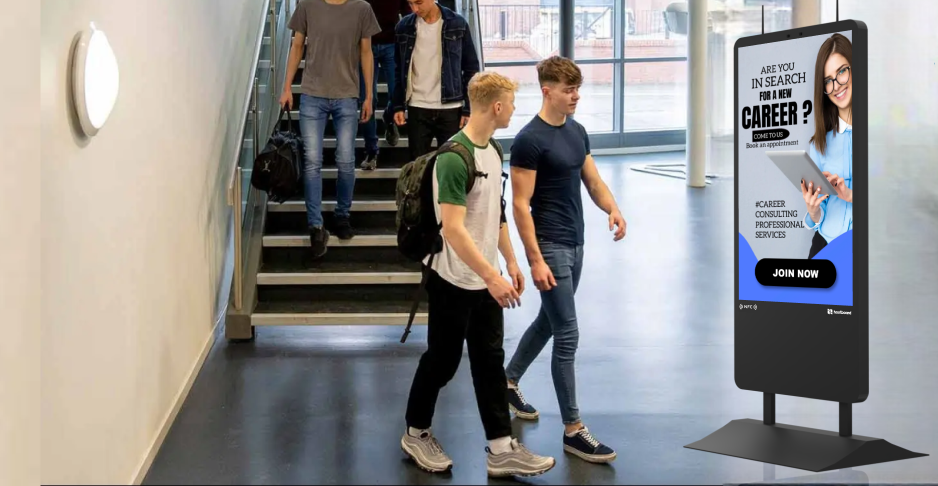
Why Acting Now Matters
Waiting for the “perfect” multi-year project means losing another recruiting cycle to more agile competitors. It means watching students migrate to unofficial communication channels the university can’t control. It means spending more each year to maintain outdated systems.
By contrast, a small, measurable pilot sends a strong signal to students, staff, and prospective families: this university is listening and responding now.

Your Next Move
If you lead a university department, innovation team, or campus IT function, you can start with:
- Identify one high-impact location where a modern engagement tool could make a visible difference this semester.
- Build a small cross-department pilot team to run and monitor it.
- Set board-ready KPIs before launch.
- Use real pilot data to make the case for broader adoption.
Startup agility doesn’t mean bypassing your governance model. It means proving value early, then scaling with confidence — so when the full budget conversation happens, you already have the data that matters.
